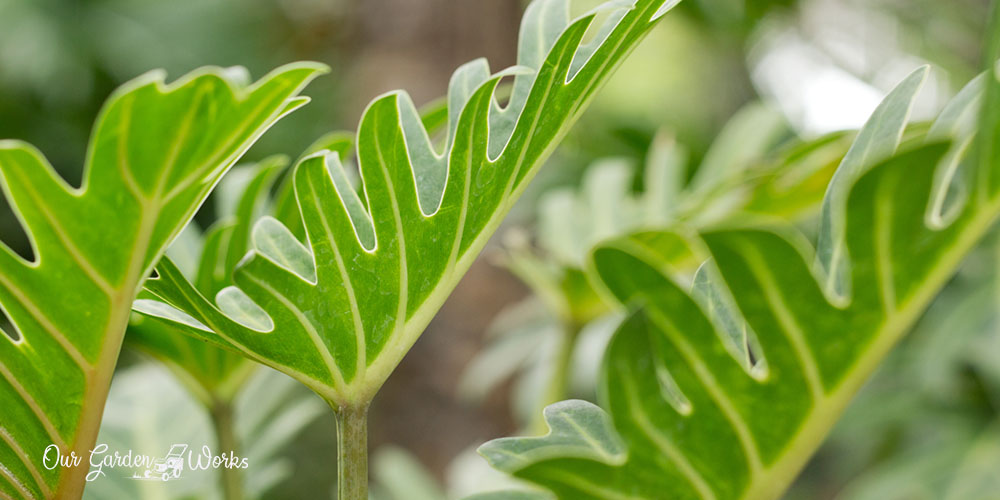As a very popular houseplant, many people often ask, can philodendrons grow outside just like other house plants like money trees?
The short answer is yes, they grow well outside but there is more detail in how you should position them outdoors than indoors.
In this post, we will discuss how philodendrons grow outdoors and the conditions that will help them thrive better.
Philodendrons are tropical plants with 700 species that grow under the canopies of trees in their natural habitat.
Learning more about their growing habits and unique parts will help you discover what makes them happier and healthier outdoors.
Q: Can philodendrons grow outside?
Yes, philodendrons are versatile plants that can grow well indoors and outdoors.
In their natural habitat, you will find them clinging and crawling under the canopies of trees. They are not meant to stand out in the middle of the garden since they can’t stand direct sunlight.
Instead, you will find philodendrons in the shady corners of gardens where they can get the ventilation and indirect sun that they need to thrive.
They may not initially catch your attention but in their absence, you’ll have an inexplicable feeling that your garden lacks something.
Philodendrons that grew and became established indoors will not immediately adjust in an outdoor setting. They need a gradual adjustment period so they won’t be shocked in the outdoor environment.
The maintenance care like watering and feeding will also change since there outdoors offer an abundance of humidity and rain that will naturally make your philodendrons healthy.
Benefits of growing philodendrons outdoors
Most growers don’t mind bringing their philodendrons outdoors since they are already thriving indoors.
However, there are several benefits in bringing them outdoors regardless if they’re already in good shape. These include:
(1) In an outdoor setting, they have more access to a better crawling space to propagate and develop longer stalks.
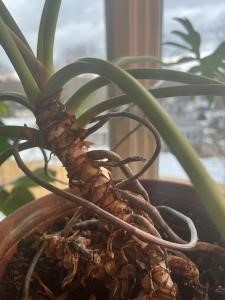
You will see philodendrons outdoors using their thick aerial roots to cling around tree trunks. Their aerial roots absorb water from the air through humidity which removes the need to water them every week.
(2) Philos will also be less dependent on you in terms of their nutrient and moisture needs. Their roots will find nutrient sources from leaves that decompose at the feet of the trees. Their aerial roots can also absorb moisture through the humid air.
In short, when you leave them outdoors, they become independent and grow on their own as long as the climate is in optimal conditions.
(3) Grow lights can only do so much but it cannot mimic everything that the sun can freely give like different levels of UV light.
Plants that are exposed to UV light outdoors usually develop shinier leaves and bigger leaves. You may check our separate post about the benefits of the sun’s UV light here.
How to expose philodendrons to the outdoor environment
Any plant that is grown indoors or in a greenhouse will get shocked if they are suddenly placed in an outdoor setting.
They will get plant stress since there’s a big difference in humidity levels and the intensity of indirect sunlight that they can get outdoors. The climate is also less controlled.
The good thing about the plant stress that philodendrons get from being exposed outdoors is it is a good stress.
They just need enough time to gradually adapt to the stress and recover. This is one of the most fascinating parts of plants which is like our immune system as humans.
Plants get stronger when dealing with plant stress as they overcome them. They become more capable of resisting drought and other environmental stress like fluctuations in temperatures.
Now, to expose philodendrons to the good stress of the outdoor environment in minuscule and gradual doses, here are the steps that you should try:
#1 First outdoor exposure: 3 hours
The first outdoor experience of your philodendrons will be the crucial part. For the first day, they may show visible signs of stress like droopy leaves but that’s natural.
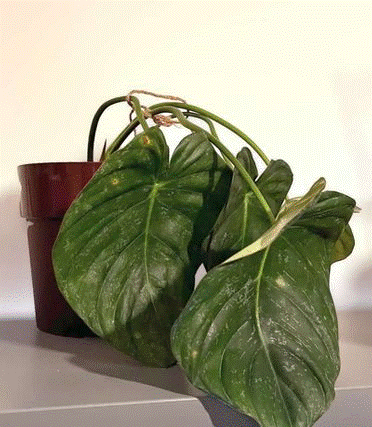
You just have to make sure that they will stay in the shade and receive indirect sunlight while they’re outside.
If your philodendrons are showing extreme stress like scorched leaves and yellowing leaves, do not progress their exposure time and let them recover indoors first. Once they regain their health for a few days, you may bring them out again.
#2 Second outdoor exposure: 6 hours
For the second day, try to expose them more by extending their exposure to 6 hours. The extended periods will challenge their ability to deal with morning to afternoon temperatures. The afternoon temperatures might do better for them since they love the warm weather.
Just make sure to water the philodendrons in the morning to ensure they have something to cool their leaves.
Also, keep them safe from direct sun to prevent sun damage. The best area to place them is under a tree or in a makeshift shade.
#3 Third outdoor exposure: 12 hours
For the third day, you will be exposing them to an outdoor setting for the whole day until nighttime.
They will experience the heat of the day and coolness of the night which they don’t fully experience indoors. They may show signs of stress at this point but they will recover once they are placed indoors again.
#4 Fourth outdoor exposure: 24 hours
If all goes well and your philodendrons have been coping up well with the adjustment, you can now leave them outdoors for a day.
This will be the last time you will bring them outdoors since you can already leave them there if they don’t show any alarming stress signs like yellowing and wilting leaves.
Pro tip: Avoid fertilizing stressed philodendrons as it will stress them even further. Allow them to recover on their own and ensure that they are getting everything they need. Once they start developing new leaves or shoots, you may start giving them fertilizers as needed.
Taking care of philodendrons outdoors
In an outdoor setting, philodendrons outdoors will require less of your assistance as long as you prepare their soil properly or place them in the right spot.
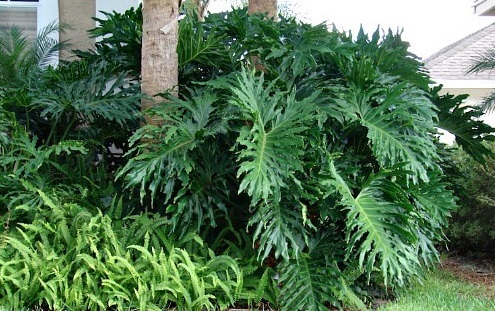
However, you may still need to check them from time to time for maintenance and pest control. Doing so will also help them give you more shoots to propagate.
Here is the new plant care routine that you need to adapt for your outdoor philodendrons:
Sun exposure and outdoor temperature
Place your philodendrons in the shade where they can get indirect sunlight. Ideal locations are under the trees.
If you have no trees around, you may place them in a corner with a sunshade. They grow well in the following temperatures in warm regions of the US:
- Day temperature: 70℉ to 85℉.
- Night temperature: 65℉ to 70℉.
Philodendrons cannot tolerate freezing and extremely hot climates. So, it may not be advisable for them to be outdoors in some regions of the US.
Here’s a simple guide on which locations and seasons allow philodendrons to be outdoors:
- USDA Hardiness Zones 8-9: Place philodendrons outdoors in mid-summer until early fall.
- USDA Hardiness Zones 9-11: Any season as long as the temperatures are in optimal conditions. Ideally, move potted philodendrons outdoors during early summer or late spring.
Watering routine
The watering routine will greatly change depending on the outdoor humidity level in your region.
If you live in warm regions of the US, then the increase in outdoor humidity can compensate for the moisture needed by your philodendrons.
However, if you’re in the northern region, then you may need to frequently water them since water evaporates faster and there are low humidity levels when it’s cool outside. Philodendrons that are planted upright are also more prone to overwatering issues like root rot.
Make sure to let the stalk grow horizontally to allow their aerial roots to absorb humid air and rely less on their roots. Also, you’ll need to water less if you plant them lightly and position the stalk horizontally.
Fertilization
Outdoor philodendrons that cling to trees will no longer require fertilization since they will have a symbiotic relation to the tree. The tree will provide it with nutrients and philodendrons will get enough moisture from the humid air.
If your philodendrons are showing signs of nutrient deficiency, you may give them a light feeding every 3 to 4 months. Only feed them as needed.
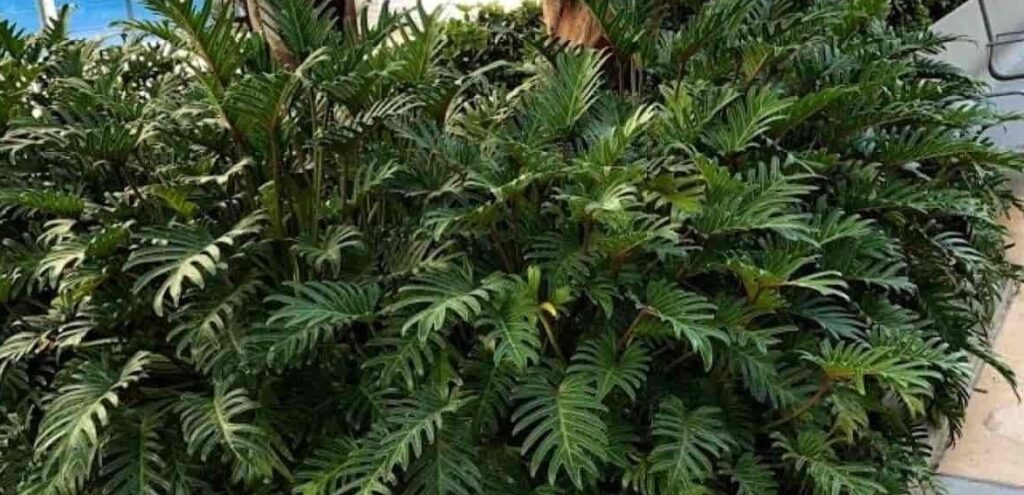
Soil preparation
Philodendrons love moist soil and well-draining soil. They prefer slightly acidic soil with 5.0 to 6.0 that’s why they grow better when they receive rain.
For potted philodendrons, most gardeners use 50% garden soil, 40% perlite, and 10% orchid bark chunks which works well for both indoor and outdoor philodendrons.
Though most gardeners grow their philodendrons in an upright position, we highly recommend that you lightly plant them in the soil and lay the stalk over the soil surface.
Philodendrons will love that position better since it allows their aerial roots to grow. You will notice that they will develop bigger and shinier leaves and they will have fewer chances of getting root rot.
When to bring philodendrons indoors again
Though philodendrons thrive in the garden, changes in the weather and season can harm their beautiful leaves.
Move them indoors when it’s:
- Too hot during summer or when there’s a heat wave.
- During cold winters.
- There’s a hurricane or typhoon in the forecast.
- Pest and fungal diseases spreading in the garden that affect tropical plants
Tips for planting philodendrons in pots
Here are some general tips for growing philodendrons:
- If you are growing philodendrons outdoors, make sure that you place them away from your exterior wall or siding. They will start to crawl on any surface they cling on it to and can damage the paint. Their roots may be thin but they have a strong grip that is not easily removed without wounding.
- Philodendrons would better have no fertilizer than receive too much fertilizer.
- If you don’t have trees around, you may use a trellis for your philodendrons to crawl onto. They grow fast and develop a ton of roots that look for something to grab.
- Since philodendrons crawl in the ground, you’ll need to check if they are growing too many shoots that can block ventilation. You may cut the plant and use the excess to propagate more philodendrons.
Final Thoughts
Philodendrons are versatile plants and they are generous when it comes to developing new leaves and shoots.
They only need enough time to adjust to the outdoor setting to fully embrace the abundance of humidity and moisture in your garden.
We hope this post helped you gain more knowledge in growing your philodendrons and understand their growing nature.
Let us know in the comments how your philodendrons adjust to their outdoor location.
Also, please share this post to your friends and let them give their philodendrons a taste of nature outdoors where they naturally belong.
